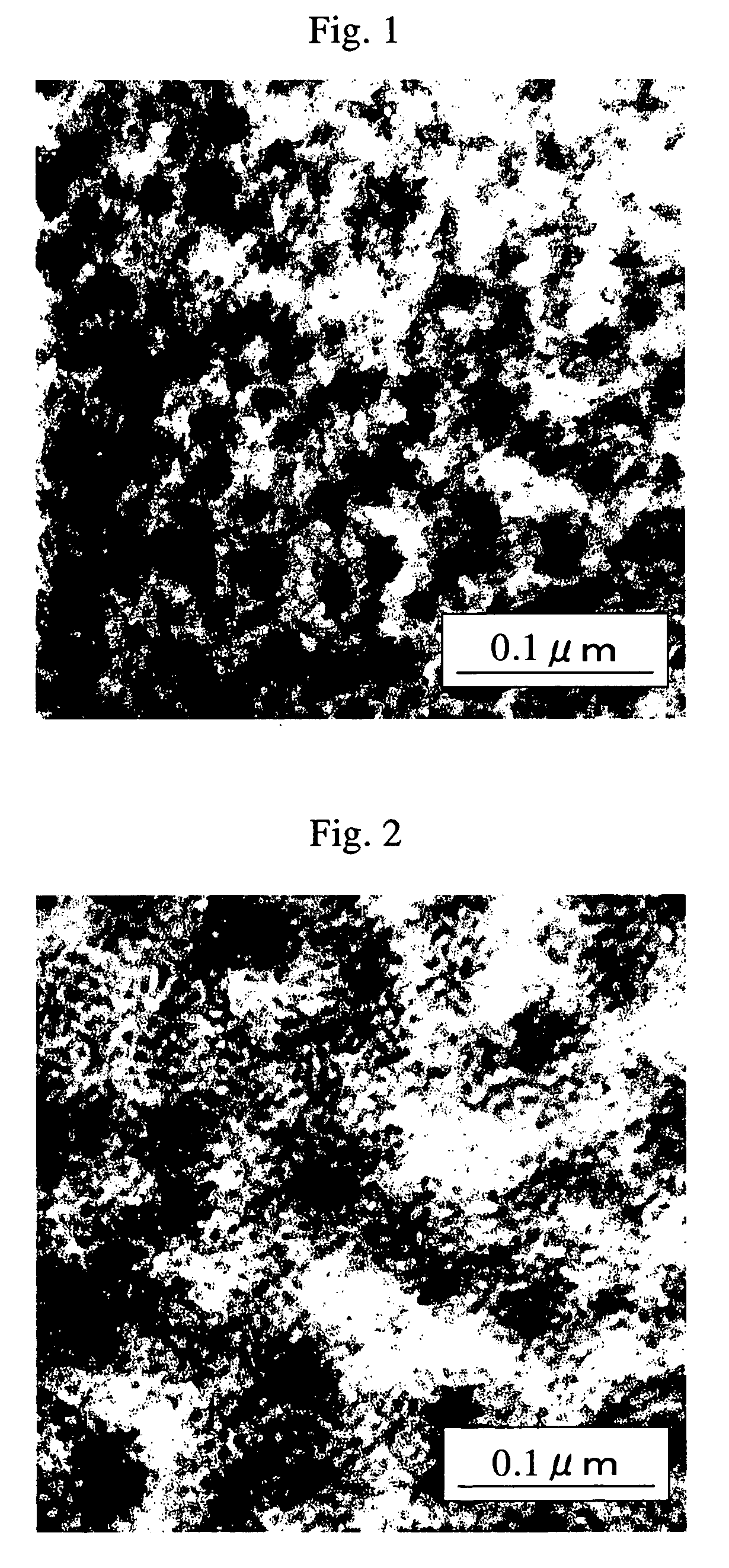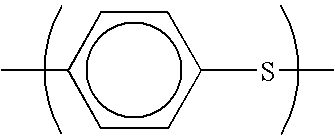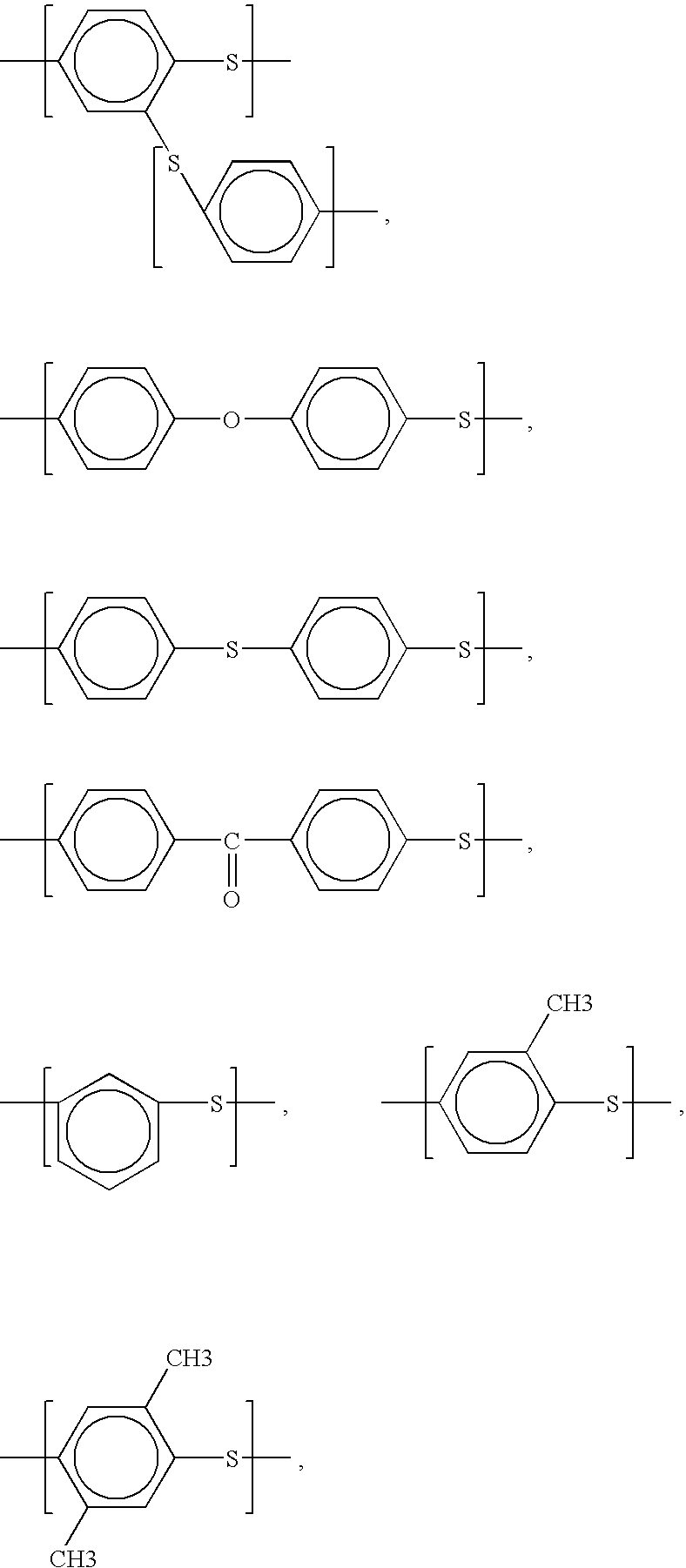Polymer alloy and method for manufacturing polymer alloy
a polymer alloy and polymer alloy technology, applied in the field of polymer alloy manufacturing methods, can solve the problems of poor spinning stability, difficult control of dispersion size for making it small, and inability to achieve satisfactory effects in improving strength, toughness and heat resistance of molded objects, etc., and achieve excellent mechanical properties and excellent regularity.
- Summary
- Abstract
- Description
- Claims
- Application Information
AI Technical Summary
Problems solved by technology
Method used
Image
Examples
working examples 1 to 5
[0168]Raw materials with a composition ratio shown in Table 1 were fed into a parallel plates type shear flow-applying device (CSS-430 produced by Linekam), and molten at a kneading temperature of 250° C. Then, a shear field was applied at the shear rate shown in Table 1. Every sample was observed in the portion subjected to the shear field at the shear rate shown in Table 1, and it was confirmed that none of the samples had any structure. Each of the samples was immediately quickly cooled in icy water to fix its structure, and the phase structure of the obtained sample was observed with a transmission electron microscope. It was confirmed that none of the samples had structure of 0.001 μm or more, and that they were made miscible. So, it was found that this series was made miscible at 250° C. under the shearing condition shown in Table 1.
[0169]Next, raw materials with a composition ratio shown in Table 1. were fed into a twin-screw extruder (PCM-30 produced by Ikegai Kogyo) set at ...
working examples 6 and 7
[0184]Raw materials with a composition ratio shown in Table 2 were fed into a parallel plates type shear flow-applying device (CSS-430 produced by Linekam), and molten at a kneading temperature of 240° C. Then, a shear field was applied at the shear rate shown in Table 2. Every sample was observed in the portion subjected to the shear field at the shear rate shown in Table 2, and it was confirmed that none of the samples had any structure. Each sample was immediately quickly cooled in icy water, to obtain a sample with its structure fixed. The phase structure of the obtained sample was observed with a transmission electron microscope. It was confirmed that none of the samples had structure of 0.001 μm or more, and that they were made miscible. So, it was found that this series was of a system that could be made miscible at 240° C. under the shearing condition shown in Table 2.
[0185]Raw materials with a composition ratio shown in Table 2 were fed into a twin-screw extruder (PCM-30 pr...
working examples 8 to 12
[0198]Raw materials with a composition ratio shown in Table 3 were fed into a twin-screw extruder set at an extrusion temperature of 260° C., with its screws arranged to have two kneading zones and with the screw rotated speed set at 300 rpm. The gut discharged from the die was passed through a cooling bath filled with water kept at 10° C., taking 15 seconds, for being quickly cooled to fix the structure. The gut was pelletized into pellets using a strand cutter. The retention time in the die was 5 seconds. All the pellets of the respective working examples were transparent. The phase structures of the pellets were observed using a transmission electron microscope, and it was confirmed that none of the samples had structure of 0.001 μm or more, and that they were made miscible.
[0199]The obtained pellets were molded into ⅛″ ASTM No. 1 dumbbell specimens according to the above-mentioned manufacturing method. For Working Example 12, as shown in Table 3, a part of the releasing agent wa...
PUM
| Property | Measurement | Unit |
|---|---|---|
| dispersion size | aaaaa | aaaaa |
| temperature | aaaaa | aaaaa |
| temperature | aaaaa | aaaaa |
Abstract
Description
Claims
Application Information
 Login to View More
Login to View More - R&D
- Intellectual Property
- Life Sciences
- Materials
- Tech Scout
- Unparalleled Data Quality
- Higher Quality Content
- 60% Fewer Hallucinations
Browse by: Latest US Patents, China's latest patents, Technical Efficacy Thesaurus, Application Domain, Technology Topic, Popular Technical Reports.
© 2025 PatSnap. All rights reserved.Legal|Privacy policy|Modern Slavery Act Transparency Statement|Sitemap|About US| Contact US: help@patsnap.com



